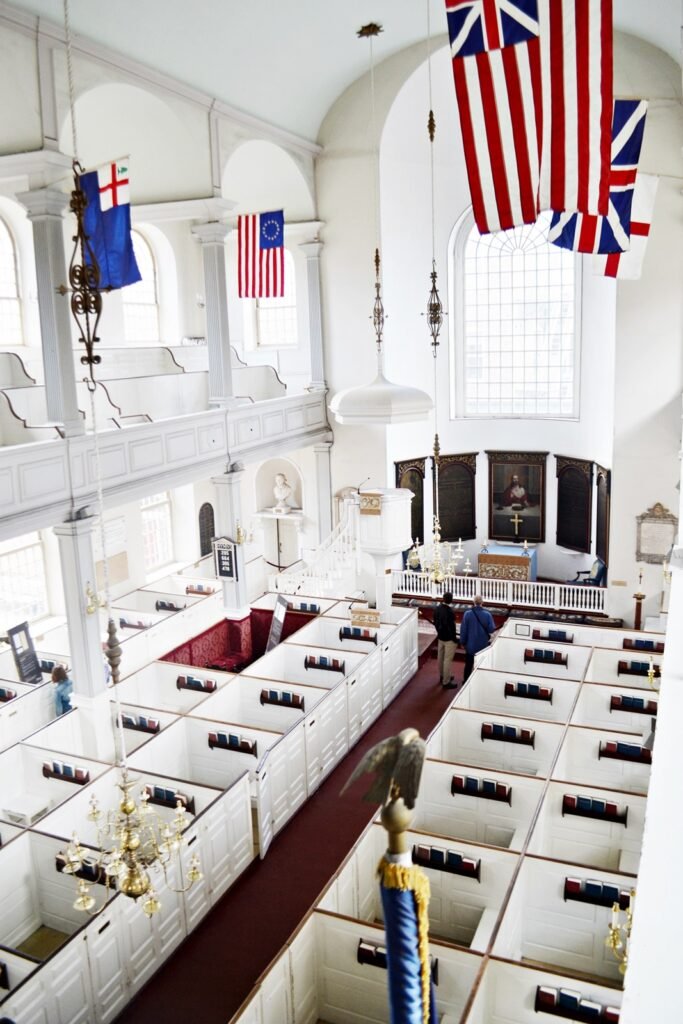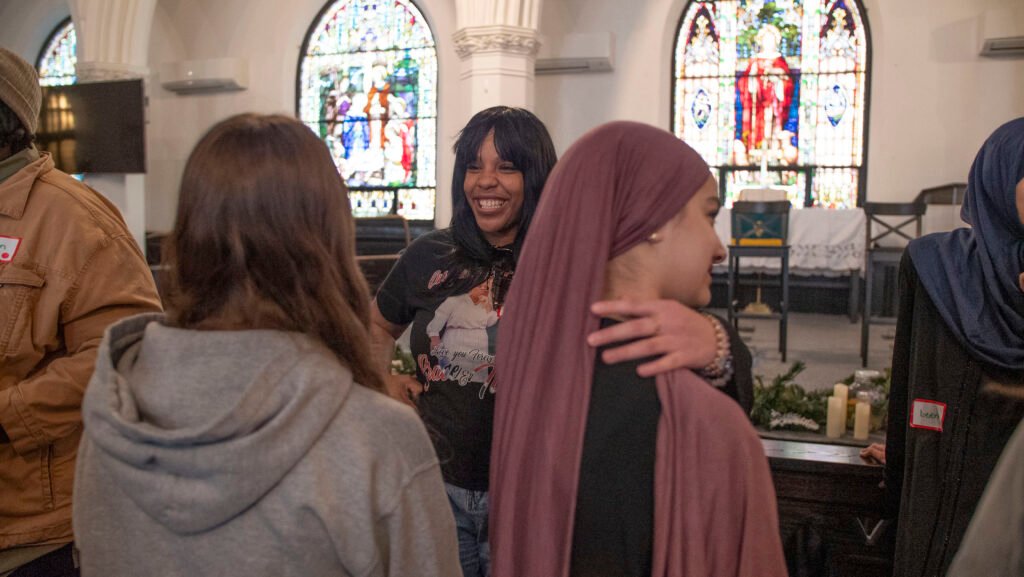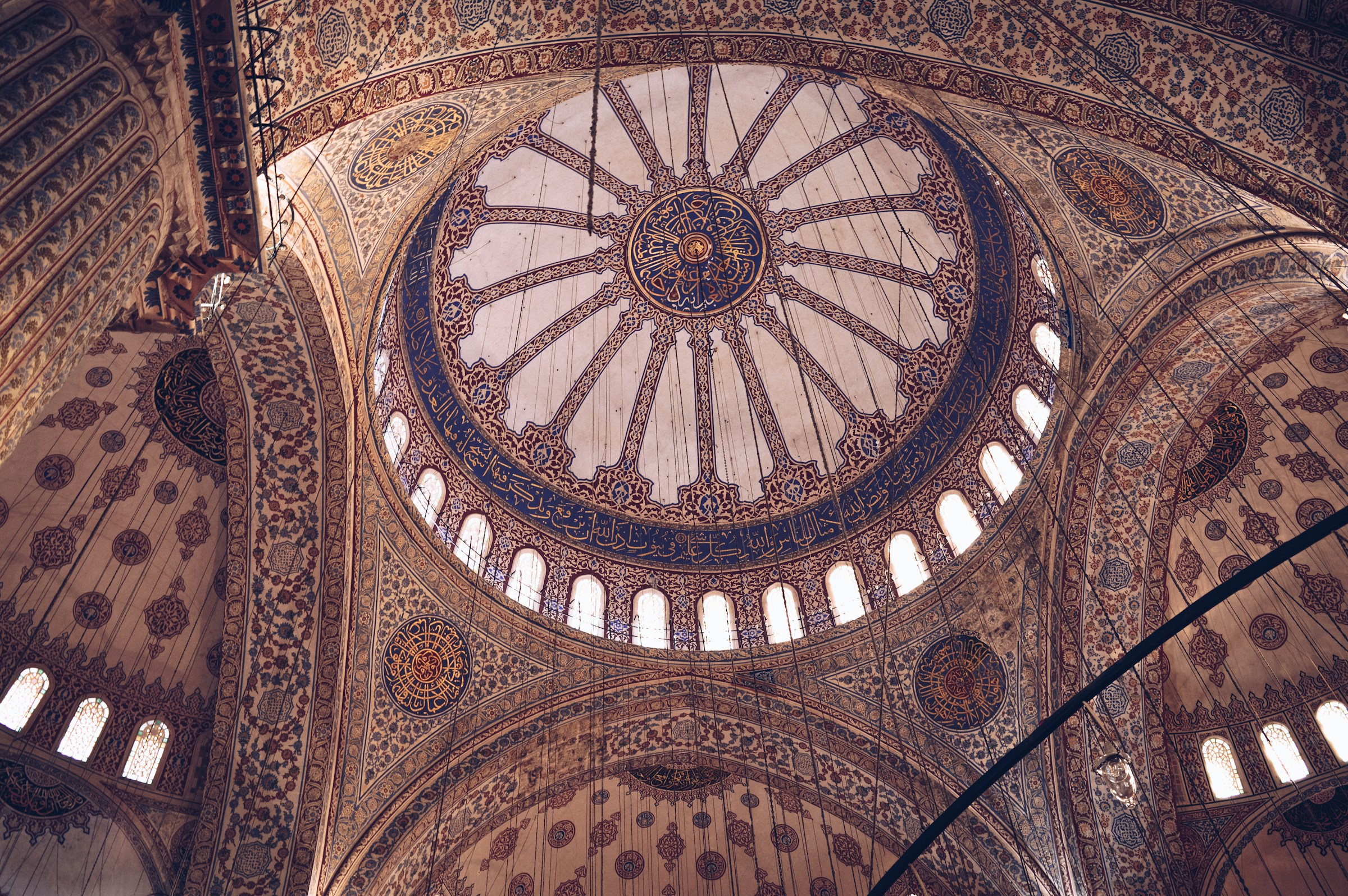Art has always had the unique ability to bridge gaps and connect people from all walks of life, helping people to share their stories and others to find the common threads of the lived experiences of all humankind. By communicating experiences and emotions, art helps to foster understanding and empathy, creating a sense of community and belonging. Art has been used as a way to explore the simple and the deep – feelings of love, belonging, religion, friendship, and much more. Art is something that all can recognize, even across religious lines and the beauty of expressing one’s faith through art has been used as a conduit for shared experiences for centuries. 20% of UNESCO’s World Heritage Sites have a religious or spiritual connection and art is such a beautifully common practice that many can relate, regardless of religious beliefs and background.
Communities throughout history have taken great pride in their faith, something reflected in the art and architecture of their places of worship. Religious structures, such as grand cathedrals, mosques, and temples, are some of the most visited buildings, attracting visitors from all corners of the world. Some visitors are attracted to their religious significance and others, their history and artwork. Annually, millions of people travel to places like the architectural marvel of The Notre Dame Cathedral, the Hagia Sophia, the stunning Old Synagogue in Erfurt, and the sprawling Angkor Wat complex in Cambodia. These places of worship, with their intricate designs and rich histories, serve as testament to the ingenuity and artistry of past civilizations. Moreover, ancient places of worship that have become ruins, like the Acropolis in Athens or the Temple of Kukulican in Chichen Itza continue to inspire awe in visitors from around the world. The beauty, wonder, and significance of these places appeal to a wide audience and creates opportunities for encountering and celebrating diverse traditions across humanity.

Photo by Julian Yu on Unsplash
The beautiful artwork and rich history of a place of worship can provide a unique opportunity for individuals to learn about a religious or spiritual practice that they might otherwise have access to. The intricate architecture, symbolic decorations, and sacred artifacts found within these spaces offer a glimpse into beliefs, rituals, and traditions. Visiting these religious spaces can be a deeply personal and transformative experience, allowing people to connect with a higher power, find solace, or seek spiritual guidance.
For others, visiting religious spaces may be part of a personal pilgrimage. Pilgrimages have been a part of human history for thousands of years, with evidence of such journeys found in ancient civilizations across the globe. A pilgrimage is a journey to a sacred place undertaken for religious or spiritual purposes. It is often seen as a way to deepen one’s faith, seek forgiveness, or fulfill a religious vow.
Acknowledging that places of worship can hold significance for millions beyond a single faith, helps us to recognize the shared value of these spaces. Visitors may want to explore their own spirituality, learn about a specific religious tradition, or even connect with people from diverse backgrounds. By uplifting and respecting these spaces we are able to celebrate a spectrum of different belief systems and ideologies, fulfilling a component of harmonious coexistence.
The beauty of architecture, art, and music within places of worship can transcend religious boundaries and be appreciated by people of all faiths, and none. Willa Cather stated that “Religion and art spring from the same root and are close kin” and art can foster conversations about theology and personal truths based in faith. It can be easier to engage with art and recognize beauty among different traditions and use those moments to discuss common human
questions and values across religions and cultures. Sharing art with each other can help us share our lived experiences. Art enables us to share our stories, perspectives, and lived experiences, fostering harmony and connection.
The Old North Church, an Episcopalian church in the North End, is famous for its role in communication ahead of the Battle of Lexington and Concord 250 years ago and testament to a pivotal moment in American history. Entering the church, visitors can learn what it was like to go to church in Boston hundreds of years ago, and what the church has meant to people over the years. It serves as a glimpse into the past and accessing religious spaces allows for visitors to come across the rich stories, history, and traditions of a community. It transports people to a different time, a different world, a different way of life.

Credit: Explore Inside the Old North Church in Boston: Aimee Tucker View here
Understanding what is appropriate, respectful, and allowed in a given culture is crucial when interacting with sacred spaces, practices, and the people who practice their spirituality there. Ultimately, not all sacred places, even major pilgrimage sites, are open to visitors. For instance, many sacred sites in Mecca, and certain sacred temples in other parts of the world, only permit entry to followers of that particular religion. Other locations may have specific rituals or areas that are restricted to members and, ultimately, recognizing the deep religious significance of spaces and understanding where you cannot go or what you cannot do can provide a valuable opportunity to learn more about a different tradition and what is important to the beliefs and practices of the people you encounter.
By respecting these boundaries and demonstrating a willingness to learn, you can engage with different cultures and spiritualities in a meaningful way, fostering greater understanding and appreciation for the diversity of human experience. Shared experiences, exchanges of values, and dialogue are essential for fostering understanding and empathy between diverse religious communities. By engaging in moments of cultural, religious, and spiritual exchange, individuals from different faiths can learn about each other, dispelling stereotypes and misconceptions that often fuel divides and keep barriers in place.
Mosaic’s goal is to foster a more peaceful, just, and inclusive society where people of all faiths can coexist harmoniously. By recognizing and celebrating our diversity, we can build bridges of understanding and create a world where everyone feels valued and respected. Through the exploration of religious art and spaces, we celebrate the multicultural tapestry of our world.

Credit: Mosaic Youth Action
Featured Image: Photo by Señor Ashraf on Unsplash




